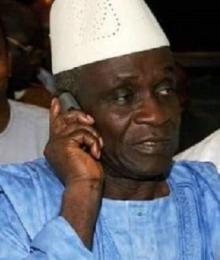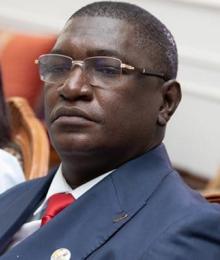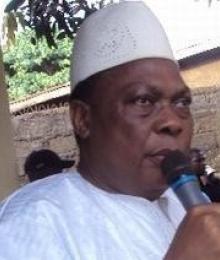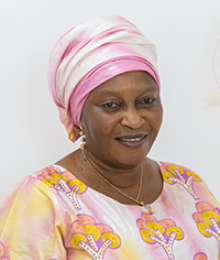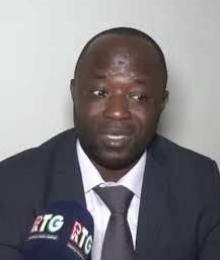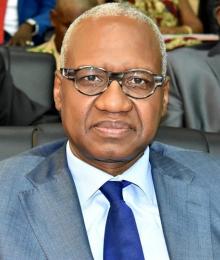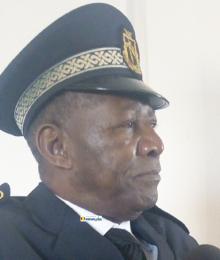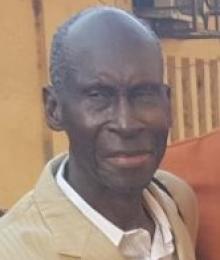
Dr. Bana Sidibé was an eminent Guinean urban planner, considered by many as the best Minister of Public Works and Urban Planning that Guinea has known since its independence. An architect by training with a doctorate, he was first the head of the Department of Humanism and Habitat at Cheikh Anta Diop University in Dakar before being appointed minister by General Lansana Conté in 1986. During his ministerial term (1986-1992), he profoundly transformed Conakry, giving it the dimensions of a modern city through numerous achievements: the Le Prince highway, the ten transversals connecting the northern and southern districts, the reconstruction of the Fidel Castro highway, and the subdivision of the upper suburbs.
Recognized for his exemplary integrity, professionalism, and incorruptibility in managing public funds, Dr. Sidibé was also the architect of the National Land Use Plan (SNAT) and was nicknamed "a walking library" for his immense expertise. He passed away on February 16, 2025, leaving behind a considerable urban planning legacy and the image of a model civil servant who never took advantage of his position for personal enrichment.
Introduction
Dr. Bana Sidibé remains etched in Guinea's collective memory as one of the greatest servants of the state. An architect by training, a visionary urban planner, and a man of political integrity, he profoundly shaped Guinea's urban landscape, particularly that of Conakry, the capital he transformed between 1986 and 1992. Recognized for his moral integrity and indisputable technical expertise, Dr. Sidibé embodied the archetype of a civil servant devoted to his nation, always placing the general interest above personal considerations. His exceptional career, woven with selflessness and professional rigor, serves as a model for future generations of Guinean leaders.
Childhood and Education
Born in Kankan, in the Upper Guinea region, Dr. Bana Sidibé grew up in an environment where traditional values of work and honesty were paramount. His brilliant academic journey led him to pursue higher education in architecture and urban planning. His thirst for knowledge and academic excellence enabled him to obtain a doctorate, making him one of the most qualified Guinean professionals of his generation.
Before returning to Guinea to serve his native country, Dr. Sidibé enriched his expertise internationally. In 1985, he held the prestigious position of head of the humanism and habitat department at Cheikh Anta Diop University in Dakar, Senegal, testifying to his reputation for excellence that extended beyond Guinean borders.
Professional Career
Dr. Bana Sidibé's professional career was marked by recognized technical expertise and a forward-thinking vision of urban development. His academic experience at Cheikh Anta Diop University in Dakar served as a springboard to major national responsibilities. Respected as an urban planner throughout West Africa, he developed a participatory approach and managerial spirit that made him a professional admired by his peers.
His greatest professional contribution remains the conception of Guinea's National Territorial Development Scheme (SNAT), a framework document that guided the country's territorial development. This achievement earned him the nickname "founding father of SNAT," testifying to the importance of this work in the history of Guinean territorial planning.
Dr. Sidibé was also recognized as an excellent educator, generously sharing his knowledge with younger generations. Even after leaving his ministerial duties, he continued to pass on his expertise, as evidenced by his visit to the Higher Institute of Architecture and Urban Planning (ISAU) in Conakry in November 2022, where he was introduced as a "walking library" by the institution's Director General.
Political Career
Although primarily recognized as an apolitical technocrat, Dr. Bana Sidibé entered the Guinean political arena in 1986 when General Lansana Conté, then President of the Republic, appointed him Minister of Urban Planning, Housing, and Public Works. This appointment came in a particular context, after the military took power following President Sékou Touré's death in 1984.
Despite Guinea's often tumultuous political environment after Sékou Touré, Dr. Sidibé managed to maintain a posture as a technician devoted to his mission, avoiding political games. This integrity and independence of mind earned him the esteem of President Conté, who reportedly once introduced him to his mother with these words: "Mother. Do you see this man? Despite his small head, he is the most educated of all my Ministers."
Paradoxically, it was this same apolitical stance that reportedly precipitated his departure from government in 1992. As the first democratic elections approached, strategists from the presidential movement apparently preferred to see a politician occupy this financially strategic position, rather than an incorruptible technocrat.
Minister
It was as Minister of Urban Planning, Housing, and Public Works that Dr. Bana Sidibé left his most visible mark on Guinea's development. Appointed to this position in 1986 by General Lansana Conté, he found Conakry in a state of advanced urban anarchy, a consequence of "anarchic liberalism" that had taken hold in the early years of the military regime.
Faced with this situation, Dr. Sidibé implemented an ambitious and structured vision to transform Conakry into a modern capital. His most notable achievements include:
- The design and construction of ten transversal roads (T1 to T10) that revolutionized traffic in the Guinean capital by connecting the northern and southern neighborhoods of the suburbs.
- The opening and paving of Le Prince Highway, a major artery in Conakry.
- The reconstruction of the Fidel Castro Highway.
- The planned development of populous neighborhoods in the upper suburbs.
- The construction of national roads and major crossing structures throughout the country.
- The initiation of a social housing construction program in different regions of Guinea.
His infrastructure project management was distinguished by several innovative principles for the time:
- Effective and fair compensation for property owners impacted by the works, even before the start of construction.
- The systematic opening of bypass roads to facilitate mobility during construction.
- The use of internationally reputable control companies, selected through transparent bidding, thus ensuring the quality of the works.
- Rigorous and transparent management of public funds, estimated at more than one billion dollars over his six years in office.
These principles earned him the popular nickname "Mr. Break-Break," referring to the numerous evictions he had to order to bring order to anarchic urban development. However, unlike others, these operations were always accompanied by humane treatment and fair compensation for displaced people.
Death
Dr. Bana Sidibé passed away on Sunday, February 16, 2025, leaving behind a considerable urban legacy. His death provoked a wave of emotion and recognition throughout the country, testifying to the profound impact he had on Guinea's development and in the hearts of Guineans.
The announcement of his death was notably relayed by the serving Minister of Housing, Mory Condé, who paid tribute to him on his Facebook page with these words: "Dr. Sidibé, recognized for his integrity and dedication, marked the history of Conakry's urbanization thanks to his many achievements. His legacy will endure through the modern roads and infrastructure he helped establish."
Tributes
The passing of Dr. Bana Sidibé sparked a wave of spontaneous tributes, both from authorities and ordinary citizens who benefited from his achievements. Many testimonies converge to describe him as "the best Minister Guinea has had since its independence" or "the builder of Conakry."
Paradoxically, despite the scale of his contributions to Guinea's urban development, no street or infrastructure bore his name during his lifetime. Several months before his death, voices had risen to request this official recognition. Thus, in May 2023, a call was made to the authorities: "He deserves our recognition and deserves to be presented to youth and posterity as a model of a patriotic leader whose example should inspire present and future leaders."
Posthumous tributes unanimously highlight four cardinal qualities that defined his public action: his exceptional technical expertise, his unwavering patriotism, his irreproachable moral integrity, and his dedication to public service. These qualities, which have become rare in the Guinean civil service, make him a model for future generations of leaders and administrators.
As one of his admirers emotionally expressed: "My heart bleeds for the disappearance of Conakry's builder... Apolitical, Outstanding technician, Incorruptible, Patriot... Better than all your predecessors and successors, you served your country without ever taking advantage of your position for personal gain."
Private Life
Dr. Bana Sidibé embodied the very definition of sobriety and discretion in his personal life. Unlike many high officials who take advantage of their positions to enrich themselves, he remained a model of integrity. Tellingly, when he left the government in 1992, after six years managing infrastructure projects worth more than a billion dollars, he had not yet completed the construction of his own house.
His exceptional probity manifested itself when he left the government: he spontaneously returned his service vehicle on the very day of the handover and vacated the administrative building he occupied, preferring to stay temporarily with one of his brothers. It was only much later that he was finally able to move into his own house, modest compared to the palaces that some of his fellow ministers had built for themselves.
This integrity, rare in the Guinean political landscape, earned him the admiration of the people but also the hostility of some less scrupulous collaborators, who looked unfavorably upon his intransigence regarding the management of public funds and the quality of works.
Conclusion
Dr. Bana Sidibé embodies the archetype of a state servant guided by excellence, integrity, and patriotism. His legacy extends far beyond the physical infrastructure he left behind; it also resides in the moral example he gave to an entire generation of Guinean leaders. In a context where corruption and personal enrichment are often perceived as normalized practices, his career demonstrates that it is possible to serve one's country with selflessness and uprightness.
The roads he traced, still functional several decades after their construction, symbolize the durability of his work. But beyond these material achievements, it is perhaps in the inspiration he continues to generate that his greatest legacy resides. As one of his admirers so aptly summarized: "The architect of the National Territorial Development Scheme is not dead; he has just changed scenery."
Guinea would benefit from honoring his memory, not only by giving his name to one of the infrastructures he designed but especially by drawing inspiration from his values and vision to build the country's future. For as the Director General of ISAU so rightly said, Dr. Bana Sidibé was truly "a walking library," a national treasure whose legacy deserves to be preserved and passed on to future generations.
In a country in search of models and benchmarks, the example of Dr. Bana Sidibé reminds us that sustainable development comes through competence, rigor, and integrity. Let us hope that his physical disappearance will be an opportunity for a rediscovery and valorization of his intellectual, moral, and urban planning legacy for the benefit of all of Guinea.











